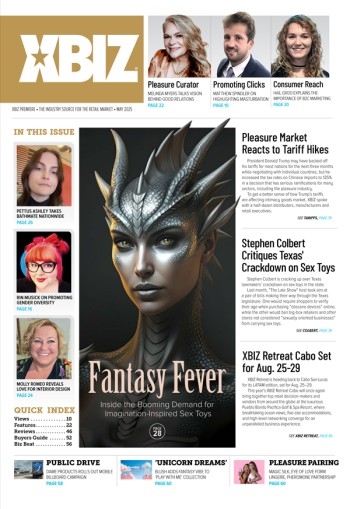Creating a captivating logo is much like composing an orchestral masterpiece where the brand’s visual voice resonates as the leading instrument. In this intricate symphony of design, every single note — every color you choose, every unique character, every deliberate line or curve — plays a pivotal role, and any dissonance can disrupt the brand’s message.
Just as a maestro understands the nuances of each instrument, appreciating or critiquing a logo requires a deep dive into its underlying layers, the silent whispers of its design choices and the stories it subtly narrates. In this article, we’ll peel back these layers of a well-designed logo, offering insights that reveal more than what initially meets the eye and highlighting the genius often concealed in the details.
A logo should possess the agility to develop with its brand yet remain unshakably anchored to its foundational values.
Reflecting Brand Mission and Vision
In the vast branding universe, every logo emerges as a unique constellation. Its distinct purpose, dreams and solemn promises are translated into visual elements, and arranged like stars to symbolize its lofty aspirations and steadfast commitments. Just as the starry constellations evoke heroic myths and legends, a masterfully designed logo takes anyone who sees it on a narrative journey where each design choice weaves a chapter of the brand’s saga. Every line, shade and shape in that logo hints at the tales of ambition, challenges and triumphs the brand has witnessed or envisions.
Does the logo reverberate with the brand’s core mission and vision? Is there an alignment between its ethos and the brand’s values? Can it, without words, communicate the ideals and principles that anchor the brand? If a logo can successfully bridge this connection, it has achieved its primary role and etched the brand’s soul into its fabric. Let’s look at how that happens from a practical perspective.
The Trinity of Logo Design: Icon, Font and Color
Icon: Often referred to as the “hero” of the logo, this graphic element is its beating heart. Whether it’s an abstract shape, a vivid mascot or an emblematic symbol, the icon is the visual cue that audiences associate with the brand.
Font: A brand’s tone and personality often lie in the typography. Is it formal? Casual? Playful? The chosen font can convey the brand’s demeanor and approachability.
Color: Ever felt calm looking at blue, or energized by looking at red? Colors evoke emotions. The palette of a logo should not only align with the brand but also stir the desired feelings within its audience.
Engaging an Audience Is About More Than Just Aesthetics
In the context of branding, aesthetic allure isn’t the main goal. It’s great if your logo is pleasing to look at, but its real purpose is to inspire a dialogue between the brand and its audience. Beauty may be the initial conversation starter, but the depth and relevance of that conversation will determine whether it continues. A logo might be draped in the finery of impeccable design, evoking admiration from design specialists. However, without a soul that speaks to its audience, it remains a pretty image devoid of deeper connections.
Understanding your audience is what helps you discern, for instance, whether to select a trendy hue and contemporary font, or an emblem that invokes nostalgia and takes the audience on a nostalgic journey back in time. These decisions aren’t merely design choices but strategic moves that appeal to the sensibilities, aspirations and emotions of a brand’s core audience. A logo should function as a magnet, attracting eyeballs and captivating hearts. When a logo intertwines beauty with relevance, it leaves a lasting imprint on all who see it.
The Four Pillars of Logo Evaluation
A logo stands as a sentinel at the brand’s gates. Just saying a logo should be “good” is akin to saying a novel should have words. What words? In what order? Evoking which emotions? Evaluating a logo is a complex task, transcending mere aesthetic appreciation. It’s about gauging how well this visual ambassador performs on various fronts. Guiding this assessment are four indispensable pillars:
Embodying the Brand: At its heart, every brand carries unique DNA composed of its history, aspirations and values. The logo must be more than a pretty face; it should echo the pulse of the brand. Does the logo’s design and spirit resonate with the stories the brand wishes to share? Does it convey the ethos and promise that the brand upholds? If a logo becomes a mirror reflecting the brand’s very soul, it truly excels in this dimension.
Aesthetic Elegance: Design elements should flow together in a symphony of balance and harmony. Colors converse, fonts narrate tales and shapes dance to a silent tune. A logo should catch the eye and satisfy the artistic soul. It’s about striking a balance where each element, while beautiful in isolation, comes together to form a cohesive masterpiece. Does the logo achieve this seamless melding of its components?
Memorability: In the bustling marketplace, where brands jostle for attention, a logo should be a beacon shining through the fog. Even more importantly, once seen, it should linger, casting its shadow in the recesses of one’s memory. Does the logo have that magnetic pull? Does it carve itself into the mindscape, ensuring that even a fleeting encounter leaves an indelible mark?
Functionality: A logo is a versatile entity, a chameleon that must adapt to various settings without losing its essence. Whether on a billboard or a business card, its impact should remain undiminished. Its design should be such that it scales without distortion, retaining its charm whether viewed on a massive screen or a tiny merchandise tag. Is the logo equipped to maintain integrity across this vast spectrum of mediums?
Five Logos That Stand Tall on the Four Pillars
1. Apple
- Embodying the Brand: Apple's simple silhouette of an apple with a bite out of it symbolizes knowledge, reminiscent of the forbidden fruit, and innovation. This represents Apple's commitment to pioneering technology and knowledge dissemination.
- Aesthetic Elegance: The clean lines and minimalist design make the logo recognizable. Its simplicity exemplifies elegance.
- Memorability: Due to its straightforward design and the brand's global presence, it's hard to forget once encountered.
- Functionality: The logo maintains its clarity and impact, whether on the back of a phone or laptop, or up on a billboard.
2. Nike
- Embodying the Brand: The Nike swoosh signifies movement and speed, encapsulating the company’s commitment to athletic excellence.
- Aesthetic Elegance: The fluidity of the design captures motion and grace, representing the seamless blend of athleticism and style.
- Memorability: Its simple, distinct shape ensures it remains etched in memory.
- Functionality: From shoes to apparel to digital platforms, the Swoosh retains its integrity and is identifiable at any size.
3. McDonald's
- Embodying the Brand: The iconic golden arches represent the company's name and commitment to quick, consistent service.
- Aesthetic Elegance: It is golden, and its simple arches evoke warmth and familiarity.
- Memorability: Ubiquity and distinct design make it globally recognizable.
- Functionality: Be it a restaurant sign, a takeaway bag or a TV commercial, the golden arches are unmistakable and adaptable.
4. Coca-Cola
- Embodying the Brand: The flowing script represents the refreshing and flowing nature of the beverage.
- Aesthetic Elegance: The red-and-white palette and timeless font are a testament to the classic design.
- Memorability: The unique script and aggressive marketing have burned this logo into the global psyche.
- Functionality: It appears vibrant and legible on cans, billboards, digital ads and merchandise.
5. Adidas
- Embodying the Brand: The stripes represent a mountain and signify the obstacles people must overcome, echoing Adidas' commitment to sports, challenges and performance.
- Aesthetic Elegance: The three parallel stripes embody simplicity and dynamism in their various forms, straight or diagonal.
- Memorability: Their recurrent use in Adidas footwear and apparel has made the three stripes a global icon.
- Functionality: The design remains consistent, effective and instantly recognizable, from shoes to sports outfits to accessories.
Each of these logos, in their design and execution, successfully encapsulates the essence of the brand it represents, while also being aesthetically captivating, memorable, and versatile across various platforms and mediums.
The Timeless Symphony of Logos
Logos are to brands what folklore is to cultures. They encapsulate heritage, beliefs, aspirations and more in a compact visual narrative. Just as folklore evolves, adapting to the sensibilities of new generations while preserving its essence, a logo should possess the agility to develop with its brand yet remain unshakably anchored to its foundational values.
As you stand at the crossroads of design and brand identity, remember that every curve, hue and font choice is a chapter in your brand’s legacy. Will your logo be a fleeting whisper or a resonant anthem heard through the ages? The quill is in your hands, and the canvas awaits. Embrace the challenge, dive deep into the brand’s essence, and let your logo be the timeless tale that future generations cherish and celebrate. Plunge into the design world with purpose and let your brand’s beacon shine brilliantly in the vast skyline of commerce.
Joe Powell is a graphic designer, brand creator and B2B and B2C marketing professional. For over 25 years, he has held remote contract roles in which he specializes in best-practice tactics for visual/brand identity and product development.








